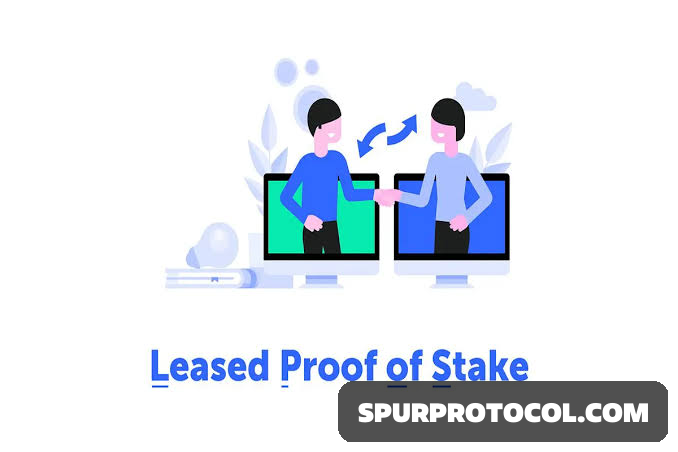Leased proof-of-stake
Leased Proof of Stake (LPoS) represents an innovative consensus mechanism designed to enhance blockchain networks' efficiency and security.
How leased proof-of-stake works
- LPoS operates on the same premises as a lottery in that more stakes increase someone’s chances of winning rewards.
The LPoS system follows a series of set processes:
- Create a lease transaction
Tokenholders lease coins to a node, specifying the amount and recipient address. Leases can be canceled at any time.
- Wait for block generation
Leased funds join a node’s pool, increasing the chance of winning the next-block lottery.
- Consensus participation
LPoS lets leasers join the consensus process; larger nodes have better odds of generating the next block.
- Generate blocks
Winning nodes validate transactions, compile them into blocks, and earn transaction fees as rewards.
- Share rewards
Node operators distribute rewards to leasers based on their investment, with higher stakes leading to more substantial rewards.
LPoS consensus validator selection process
In LPoS, the process of selecting validators to propose and validate new blocks on the blockchain network involves :
1. Stake weighting
- Stake weight determines the influence of a validator on the network and is measured by the number of stakes or asset delegations to validate the network.
- In the case of LPoS, stake weighting can also include tokens rented by users to validators, allowing for more even and flexible structures.
2. Block proposal
- The process by which a validator suggests a new block containing a set of pending transactions to add to the blockchain.
- Validators are often selected based on their rates or reputation, combine the transactions into a block containing a timestamp and a link to the previous block, and then submit it to the network for further validation.
3. Block validation
- Once a block is recommended, the network verifies its authenticity.
- Validators work together to authenticate the block and verify that all transactions comply with the network’s rules, thus ensuring the integrity and security of the blockchain.
- Unlike the Proof-of-Work (PoW) mechanism, where miners solve complex mathematical tasks, LPoS relies more on the ownership and delegation of tokens than on computational energy consumption.
Benefits of Leased Proof-of-Stake
1. Passive investment
It is possible for users to partake in block generation and receive rewards without actually generating blocks.
2. Allows smaller investors to participate
- LPoS protocols necessitate a minimal investment for network participation.
- For instance, Waves requires a node to possess at least 1,000 Waves (WAVES) in order to partake in block generation.
- Less-wealthy investors can lease cryptocurrency tokens to more prominent nodes for the possibility of receiving rewards.
3. Difficult to manipulate
- The LPoS generating balance rule computes the lowest balance after accounting for leasing in the most recent 1,000 blocks, thwarting attempts to manipulate the system by transferring funds between accounts.
4. Increases chances of winning rewards
- The LPoS is designed to reward nodes with the greatest economic interests in the network. Therefore, leasing tokens to a larger node increases the likelihood of receiving rewards compared to going it alone.
5. Retain ownership
- The leased tokens cannot be traded or transferred (they won’t even exit the wallet), minimizing the risk of loss.
6. Low barrier to entry
No mining hardware is required to partake in validation.
Core Features of Leased Proof of Stake
1. Decentralized
Anyone can participate without needing permission. Validators are chosen probabilistically based on stake.
2. Balance Leasing
Coins are leased, not transferred. Users retain full control.
3. Unpredictable block generation
The next validator is chosen using a randomization technique to prevent manipulation.
4. Rewards from fees
Validators earn transaction fees as rewards.
5. High scalability
LPoS chains can achieve high throughput without compromising decentralization

